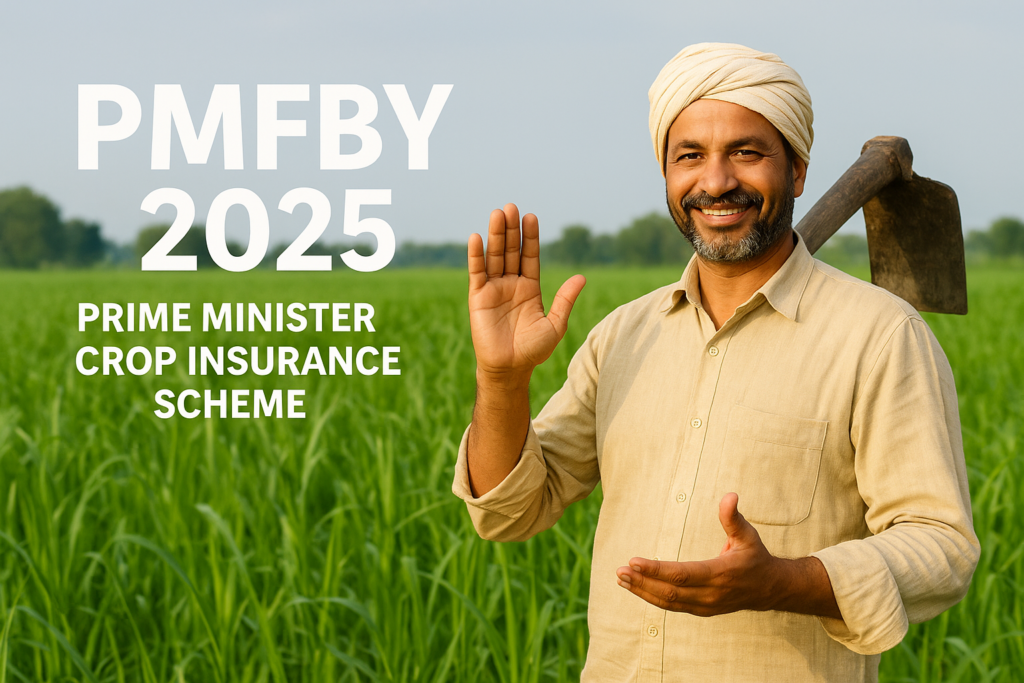
The Pradhan Mantri Fasal Bima Yojana (PMFBY), also known as the Prime Minister’s Crop Insurance Scheme, continues to be a lifeline for millions of farmers across India in 2025. Launched in February 2016, the scheme provides comprehensive crop insurance coverage to safeguard farmers against financial losses due to natural calamities, pests, and diseases.
With agriculture being the backbone of India’s economy, PMFBY plays a crucial role in ensuring food security and farmer welfare. Let’s take a closer look at the latest developments, features, and impact of the scheme in 2025.
Objectives of PMFBY
- To provide affordable crop insurance to farmers.
- To stabilize farmer income after crop losses.
- To encourage farmers to adopt modern agricultural practices and invest more in farming
- To ensure food security at the national level.

Key Features of PMFBY 2025
Affordable Premiums: Farmers pay only a small share of the premium—2% for Kharif crops, 1.5% for Rabi crops, and 5% for commercial/horticultural crops. The remaining premium is subsidized by the government.
All-Risk Coverage: Covers crop losses due to natural disasters (floods, drought, hailstorms, cyclones), pests, and diseases.
Nationwide Implementation: Available across states, ensuring “One Nation, One Scheme.”
Technology Integration: Use of satellites, drones, mobile apps, and weather stations for faster claim settlement and transparency
Direct Benefit Transfer (DBT): Insurance claim amounts are directly credited to farmers’ bank accounts, reducing delays and middlemen
Penalty for Delays: From 2025, delayed payments by insurance companies or states attract a 12% penalty interest, credited to farmers.
Budget Concerns
Despite its importance, the Union Budget 2025–26 allocated ₹12,242 crore for PMFBY—a 23% reduction compared to the revised estimate of ₹15,864 crore in 2024–25, marking the lowest allocation in seven years.
DIGI MERCH STORE PRINT ON DEMAND















